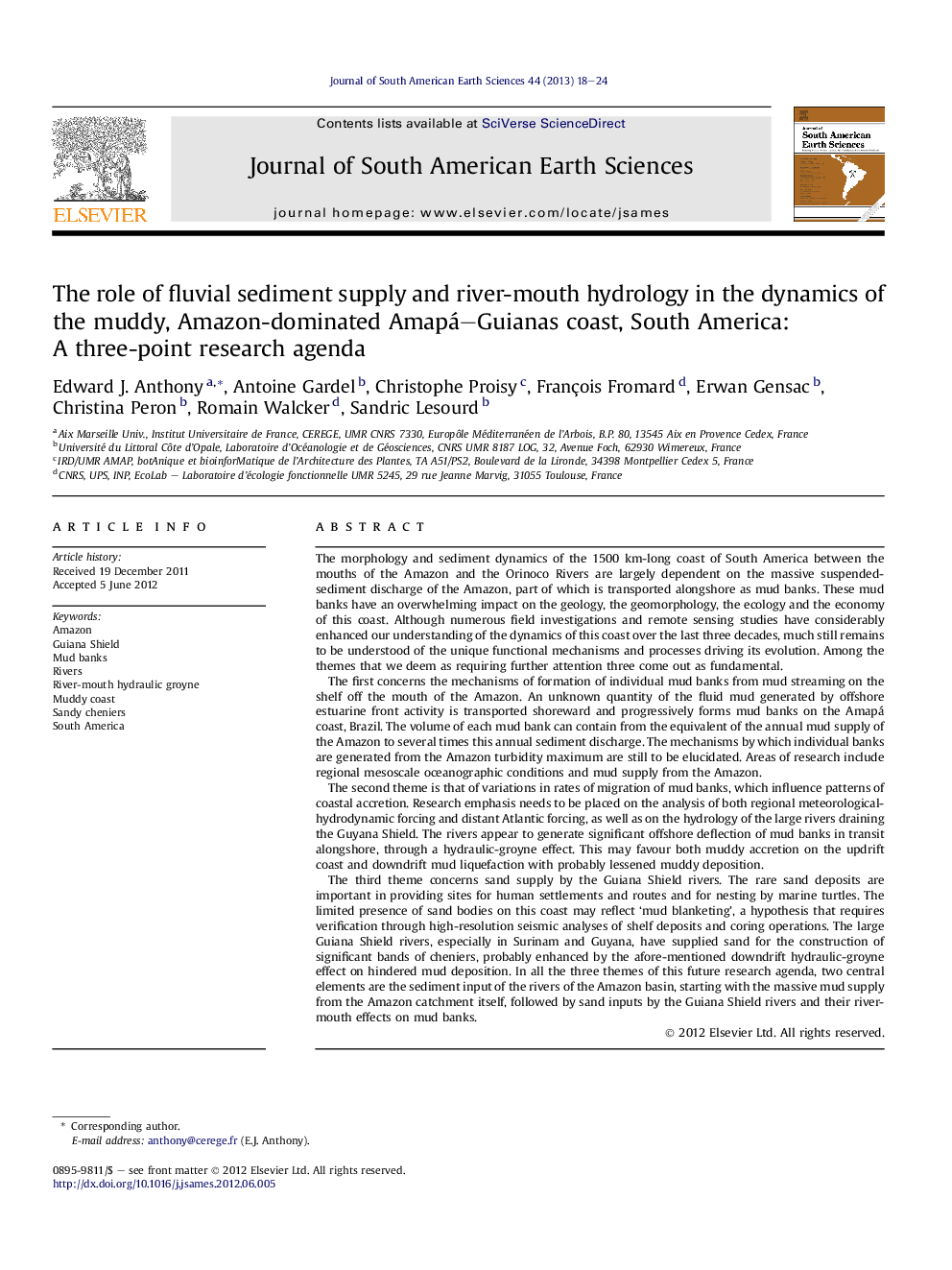| کد مقاله | کد نشریه | سال انتشار | مقاله انگلیسی | نسخه تمام متن |
|---|---|---|---|---|
| 4682406 | 1635165 | 2013 | 7 صفحه PDF | دانلود رایگان |

The morphology and sediment dynamics of the 1500 km-long coast of South America between the mouths of the Amazon and the Orinoco Rivers are largely dependent on the massive suspended-sediment discharge of the Amazon, part of which is transported alongshore as mud banks. These mud banks have an overwhelming impact on the geology, the geomorphology, the ecology and the economy of this coast. Although numerous field investigations and remote sensing studies have considerably enhanced our understanding of the dynamics of this coast over the last three decades, much still remains to be understood of the unique functional mechanisms and processes driving its evolution. Among the themes that we deem as requiring further attention three come out as fundamental.The first concerns the mechanisms of formation of individual mud banks from mud streaming on the shelf off the mouth of the Amazon. An unknown quantity of the fluid mud generated by offshore estuarine front activity is transported shoreward and progressively forms mud banks on the Amapá coast, Brazil. The volume of each mud bank can contain from the equivalent of the annual mud supply of the Amazon to several times this annual sediment discharge. The mechanisms by which individual banks are generated from the Amazon turbidity maximum are still to be elucidated. Areas of research include regional mesoscale oceanographic conditions and mud supply from the Amazon.The second theme is that of variations in rates of migration of mud banks, which influence patterns of coastal accretion. Research emphasis needs to be placed on the analysis of both regional meteorological-hydrodynamic forcing and distant Atlantic forcing, as well as on the hydrology of the large rivers draining the Guyana Shield. The rivers appear to generate significant offshore deflection of mud banks in transit alongshore, through a hydraulic-groyne effect. This may favour both muddy accretion on the updrift coast and downdrift mud liquefaction with probably lessened muddy deposition.The third theme concerns sand supply by the Guiana Shield rivers. The rare sand deposits are important in providing sites for human settlements and routes and for nesting by marine turtles. The limited presence of sand bodies on this coast may reflect ‘mud blanketing’, a hypothesis that requires verification through high-resolution seismic analyses of shelf deposits and coring operations. The large Guiana Shield rivers, especially in Surinam and Guyana, have supplied sand for the construction of significant bands of cheniers, probably enhanced by the afore-mentioned downdrift hydraulic-groyne effect on hindered mud deposition. In all the three themes of this future research agenda, two central elements are the sediment input of the rivers of the Amazon basin, starting with the massive mud supply from the Amazon catchment itself, followed by sand inputs by the Guiana Shield rivers and their river-mouth effects on mud banks.
► Part of the muddy discharge of the Amazon forms mud banks on the South American coast.
► There is need for more insight on links between river discharge and coast.
► Complex processes of mud bank formation require more insight on oceanographic forcing.
► Mud bank migration and coastal accretion are influenced by river-mouth hydraulics.
► Guiana Shield rivers provide sand for chenier formation.
Journal: Journal of South American Earth Sciences - Volume 44, July 2013, Pages 18–24